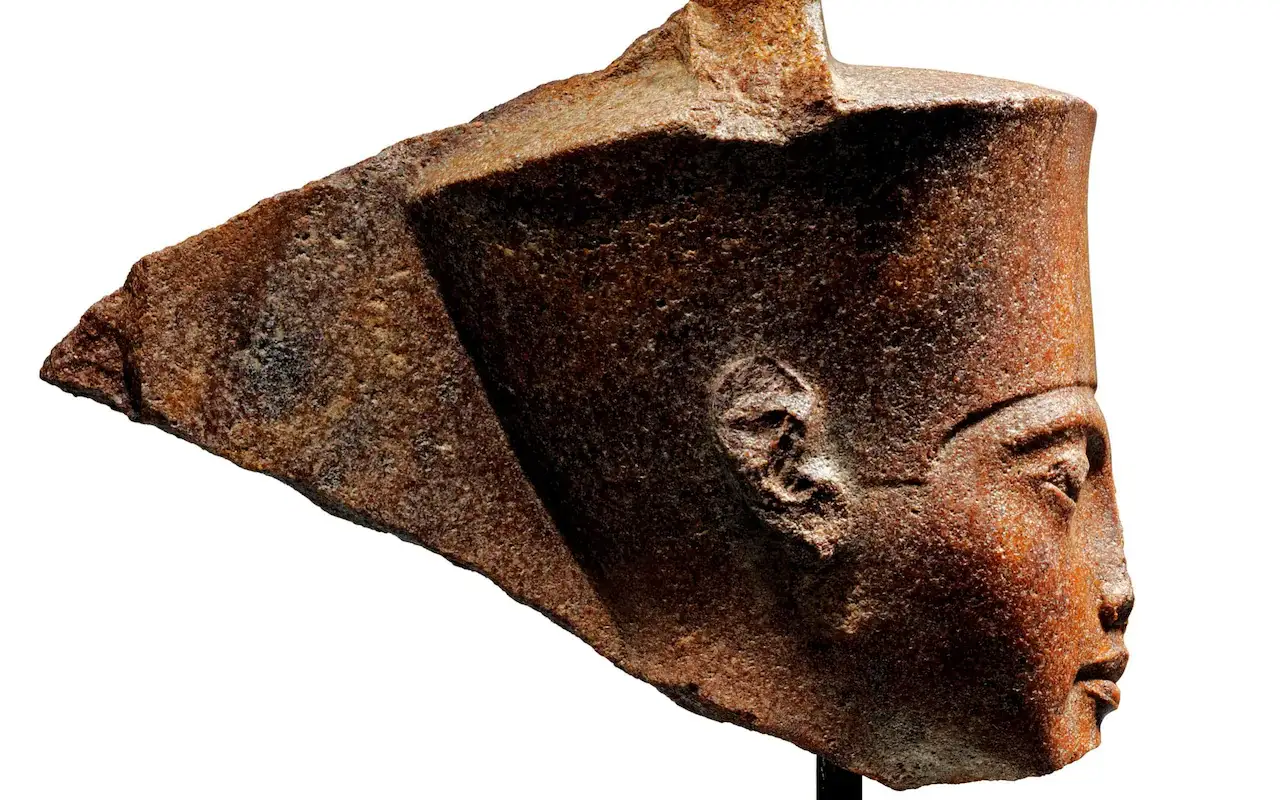Egypt will sue Christie's: 6 million head passed at auction is stolen property
Egypt has announced that it will sue Christie’s auction house: according to authorities in the African country, the head of Pharaoh Tutankhamun that was auctioned a few days ago for more than $6 million is actually an asset stolen in the 1970s. The work, a quartzite statuette with 3,000 years of history, was in fact allegedly stolen from a temple in Karnak, and Egypt is clamoring for its return. “They have left us with no other option than to make our case before a court,” Egypt’s minister of antiquities, Khaled el-Enany, told the BBC. “And we will do everything to ensure that the bust of Tutankhamun returns to Egypt.”
Of course, Egypt has been fighting for the statue’s return ever since its sale was announced in early June. According to Christie’s reconstructions, the work was reportedly sold in 1985 by German dealer Heinz Herzer to the private collector who held ownership before the auction. Prior to that, the work was in the possession of Austrian dealer Joseph Messina, who reportedly bought it in 1973-1974 from Prince Wilhelm von Thurn und Taxis, who in turn, the auction house goes on to explain, would have had the Tutankhamun since the 1960s.
According to the Association for Research into Crimes against Art (ARCA), however, Herzer is linked to at least one case of the sale of stolen works, with which Italy is very familiar: it is the Fano Athlete, which Italy is insistently asking for from the Getty Museum in Los Angeles and which Herzer, as those who have been following the case are aware, bought in 1971. ARCA also finds it implausible that the work was handled in the past by Messina, the owner of a small gallery, “an at least unusual place,” the association explains, “to own an Egyptian statue of such importance.” And again according to ARCA, there is no evidence that the Tutankhamun was once in the hands of Prince von Thurn und Taxis.
The auction house, of course, defended itself by letting it know that the reconstruction was the result of a careful study that established the legal provenance of the property, and remarked that Christie’s would not venture to sell works whose provenance is unclear. Finally, Christie’s let Artnet News know that the work has been displayed several times in the past without anyone claiming it. However, the Egyptians are adamant in their intentions and have shown a clear willingness to pursue the matter.
Pictured: the disputed statue of Tutankhamun.
 |
| Egypt will sue Christie's: 6 million head passed at auction is stolen property |
Warning: the translation into English of the original Italian article was created using automatic tools. We undertake to review all articles, but we do not guarantee the total absence of inaccuracies in the translation due to the program. You can find the original by clicking on the ITA button. If you find any mistake,please contact us.





























